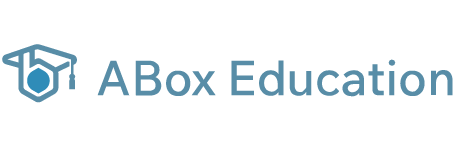The Future of Education: How Online Learning is Reshaping Traditional Classrooms
- bonniechen54
- Feb 28
- 4 min read
The education landscape is undergoing a massive transformation, largely driven by the rise of online learning. While traditional classrooms have long been the standard, advancements in technology and changing societal needs have led to the rapid growth of online education. Whether it’s for K-12, university courses, or professional development, online learning is reshaping the way students and educators approach education. But what exactly does this mean for the future of learning, and how are students and teachers adapting to this new model?

The Rise of Online Learning
Online education has existed for decades, but its growth skyrocketed during the COVID-19 pandemic, as schools, universities, and workplaces turned to digital platforms for both remote learning and professional development. What was initially a necessity has evolved into a preferred choice for many students. The flexibility of online learning, combined with the accessibility of various tools and platforms, has made education more reachable than ever before.
Today, online learning isn’t just for students who can’t attend traditional classes—it’s increasingly seen as a legitimate and even superior option for certain types of education. From asynchronous courses that allow students to learn at their own pace to live virtual classrooms offering real-time interaction, the choices are endless.
Benefits of Online Learning
1. Flexibility and Accessibility
One of the greatest advantages of online learning is flexibility. Students can attend classes from anywhere in the world, and many online programs offer asynchronous learning, allowing them to complete coursework on their own time. This flexibility is particularly appealing to working professionals, parents, and anyone with a busy schedule.
Moreover, online learning can be more inclusive, offering educational opportunities to people in rural or underserved areas where traditional institutions may not be easily accessible. For students with disabilities, online learning also provides a more adaptable environment that can cater to their specific needs.
2. Personalization of Learning
With online education, students can often customize their learning experience. Many platforms offer personalized learning paths based on students' interests, skills, and progress. Adaptive learning technologies can provide real-time feedback and adjust the course material according to how well the student is mastering the concepts, ensuring they are always challenged at the right level.
3. Broader Access to Resources
One of the most exciting aspects of online learning is the wealth of resources available to students. Beyond textbooks, students can access recorded lectures, online forums, digital libraries, and even AI-powered tutoring systems that help them grasp complex concepts. The ability to interact with experts from around the world also allows for a more diverse, rich educational experience.
How Online Learning is Shaping the Future
1. Changing the Role of Teachers
As online learning continues to evolve, the role of educators is shifting. Rather than simply delivering information in a traditional classroom setting, teachers are now curating learning experiences, guiding students through interactive lessons, and using technology to facilitate engagement. Teachers are increasingly seen as mentors or facilitators who provide individualized support, whether through one-on-one online sessions, group discussions, or feedback on student work.
2. Changing Curriculum Delivery
Curriculum delivery is no longer limited to textbooks and in-person lectures. Online learning allows for multimedia-rich content—interactive videos, podcasts, digital labs, and even virtual reality experiences. In fact, some fields such as medicine, engineering, and architecture are increasingly utilizing virtual labs and simulations to provide hands-on learning experiences that were once only available in physical classrooms.
Additionally, the online model is making education more dynamic. Rather than following a fixed schedule, students can engage in projects, discussions, and experiments that deepen their understanding. This level of interactivity gives students more autonomy and fosters independent thinking.
3. Globalization of Education
The ability to connect with students and instructors across the globe is perhaps one of the most exciting prospects of online learning. Students can enroll in courses at institutions that were once out of their reach due to geographic limitations or financial constraints. Virtual classrooms enable collaboration with peers from different cultural backgrounds, which not only broadens perspectives but also enhances learning.
However, this globalization comes with challenges. As education becomes more digital, there are concerns about the digital divide and unequal access to the internet and technology. Ensuring that all students, regardless of location or financial situation, have access to these opportunities remains a key issue for the future of online learning.
The Challenges of Online Learning
Despite the many advantages, online learning is not without its challenges. One of the biggest hurdles is the lack of face-to-face interaction, which can lead to feelings of isolation. Many students struggle with staying motivated without the physical presence of teachers and peers. Additionally, online learning requires a high degree of self-discipline and time management, which can be difficult for some students.
Furthermore, online assessments can sometimes fail to capture the full range of a student’s abilities. With limited in-person interaction, teachers may find it more difficult to gauge a student’s engagement, participation, or critical thinking in the same way they would in a classroom environment.




Comments